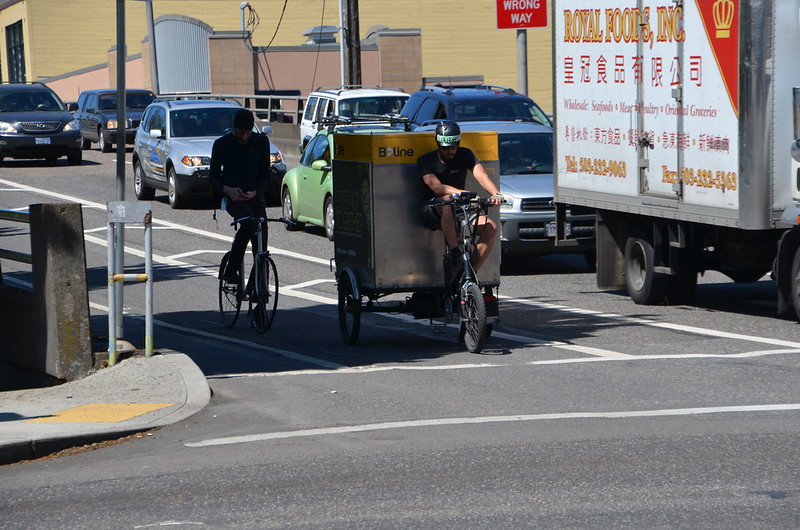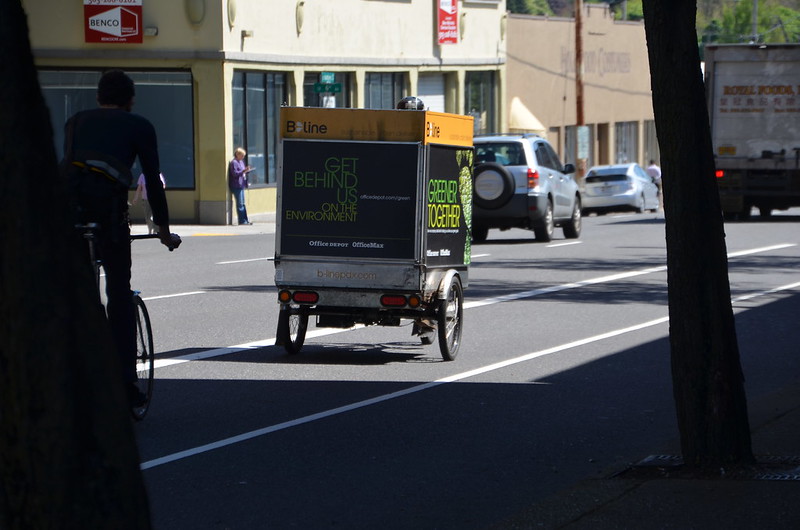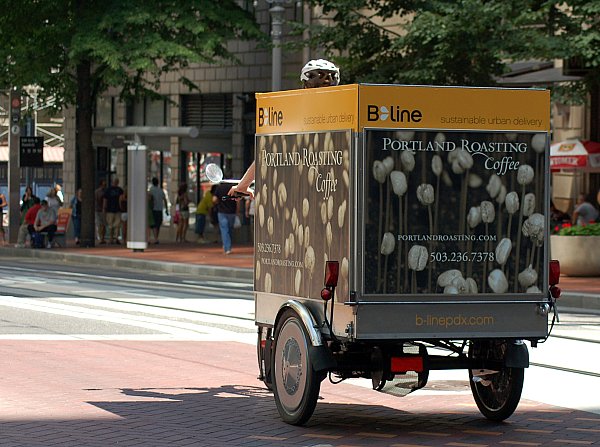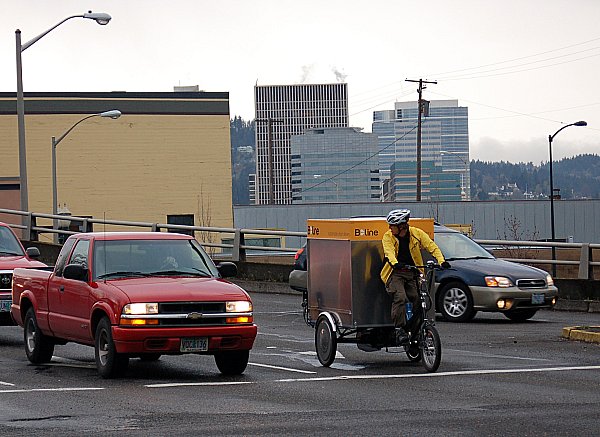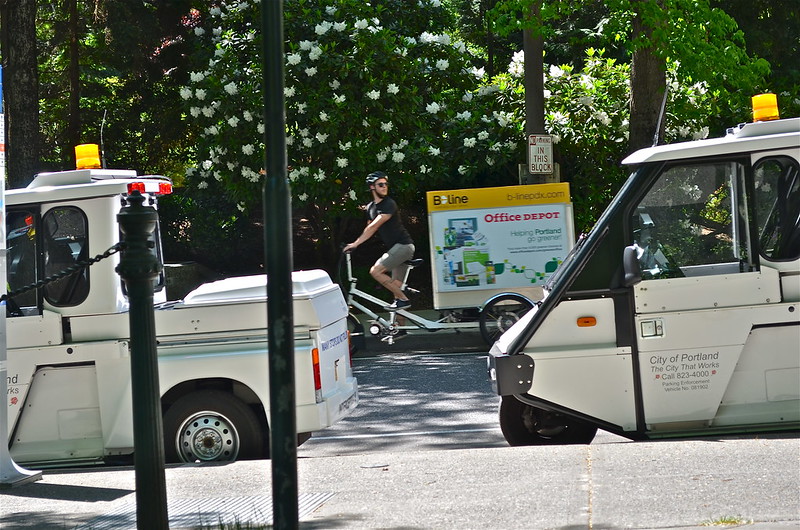
May 7, 2013, a delivery bicycle from B-Line, caught between two parked parking enforcement vehicles. I'm standing in the park known as Chapman Square--I'd finished my lunch and was about to walk over to the bus stop when I saw the B-line guy turn onto the street. I just knew I'd get a great photo if I could catch him in that space between the parked vehicles. Got it!
Here's some interesting information about the park, found on the City of Portland's Web site:
- Chapman Square, SW 4th Ave. & Main St.
- General Info: Acquired in 1869.
- Amenities: Includes disabled access restroom, historical site, paths – paved, and statue or public art.
- Special Information: Park hours: 5:00am-midnight.
Historical Information: Chapman is one of two courthouse squares that comprise the Plaza Blocks which are bounded by Third and Fourth Avenues and Salmon and Madison Streets. The south square is named for former Iowa territorial legislator and native Virginian William Williams Chapman (1808-1892) who arrived in Portland in 1850. An attorney with business interests, he also served as surveyor general of Oregon. In 1870, he sold this portion of his land claim to the city. The north square is named for Kentuckian Daniel H. Lownsdale, who settled in Portland in 1845 when there were fewer than 800 people living in the city.
The Plaza Blocks were lively places where orators held forth and citizens assembled. They are characterized in part by several large old elms and gingko trees. Chapman Square, originally designed for the exclusive use of women and children, features all female gingko trees. Lownsdale Square was to be the "gentlemen's gathering place." Today the Plaza Blocks are still a busy gathering place, although men and women can now safely coexist in either of them.
In Chapman Square is a bronze statue commissioned by the Oregon Trail Coordinating Council to commemorate the 150th anniversary of the Oregon Trail in 1993. The Promised Land, by Oregon artist David Manuel, depicts a pioneer family - father, mother, and son - at the end of their journey. The red granite slab upon which the statue is mounted is inscribed with a quote by Thomas Jefferson. The plaza in front of the statue is sandblasted with footprints reminiscent of pre-settlement days: jackrabbit, black bear, porcupine, grouse, coyote, elk, and moccasin prints.
Between the two Plaza Blocks, Main Street curves around the second oldest sculpture in the Portland metro area - a huge elk fountain given to the city by David P. Thompson. Thompson arrived in Portland driving sheep over the Oregon Trail. He served as Portland's mayor from 1879-1882. One day he looked out of the office window in his New Market Building at the Skidmore Fountain and decided that he wanted to dedicate a fountain to the city as well. As founder and director of the Oregon Humane Society, Thompson’s vision for the sculpture was to provide an accessible watering place for "bird, beast, and human." He commissioned Roland Roland Hinton Perry, whose work adorns the Library of Congress and the dome of the Pennsylvania state capitol, to create the sculpture. Local architect H.G. Wright designed the stone base of eastern granite, which included drinking troughs for horses and dogs. In 1900, the 3,000-pound bronze fountain was placed in a site that was a former feeding ground for elk that wandered down from the west hills of the city. The Exalted Order of Elks refused to dedicate it because they considered the statue "a monstrosity of art." Many have tried to have Thompson's elk removed because it can be considered a traffic obstacle, but the statue remains. In 1974, after a debate about disturbing the blocks in order to complement the then-new General Services Building, Thompson's elk and the Plaza Blocks were designated as Historic Landmarks.
